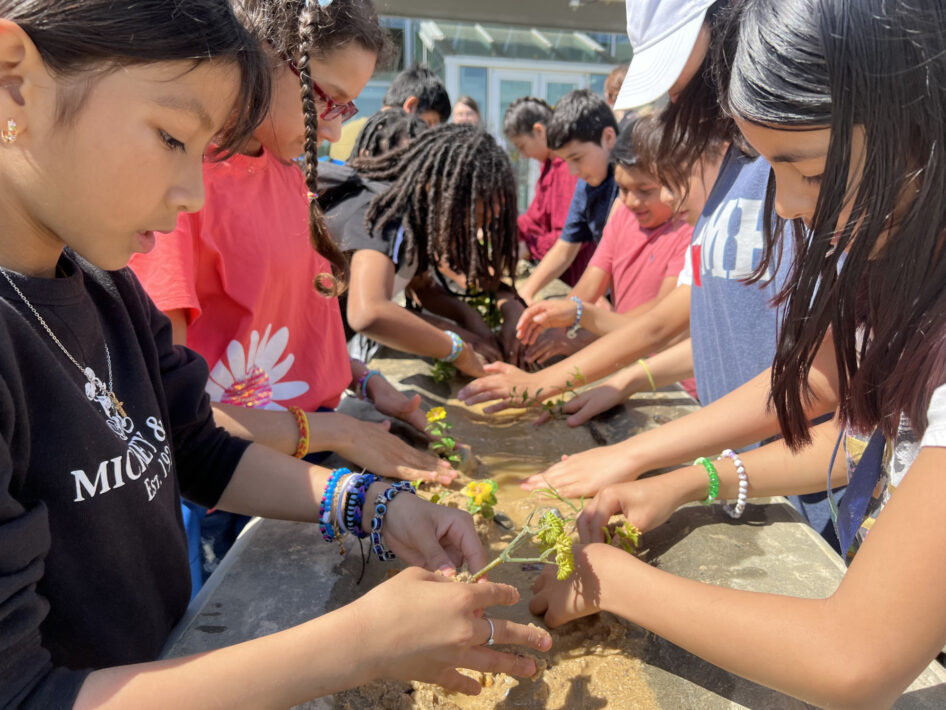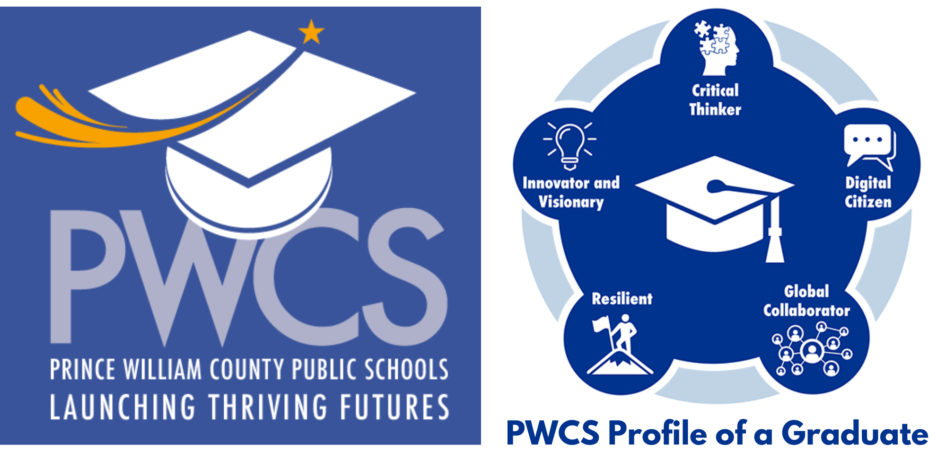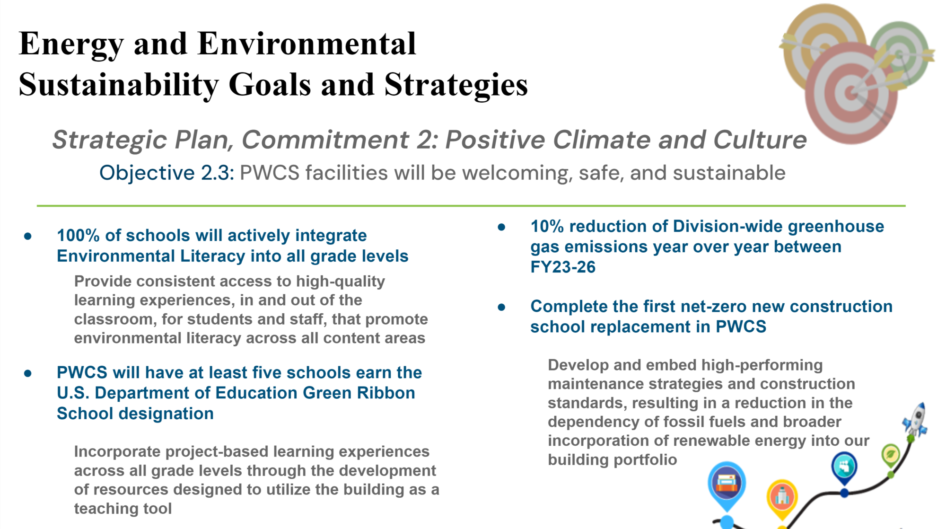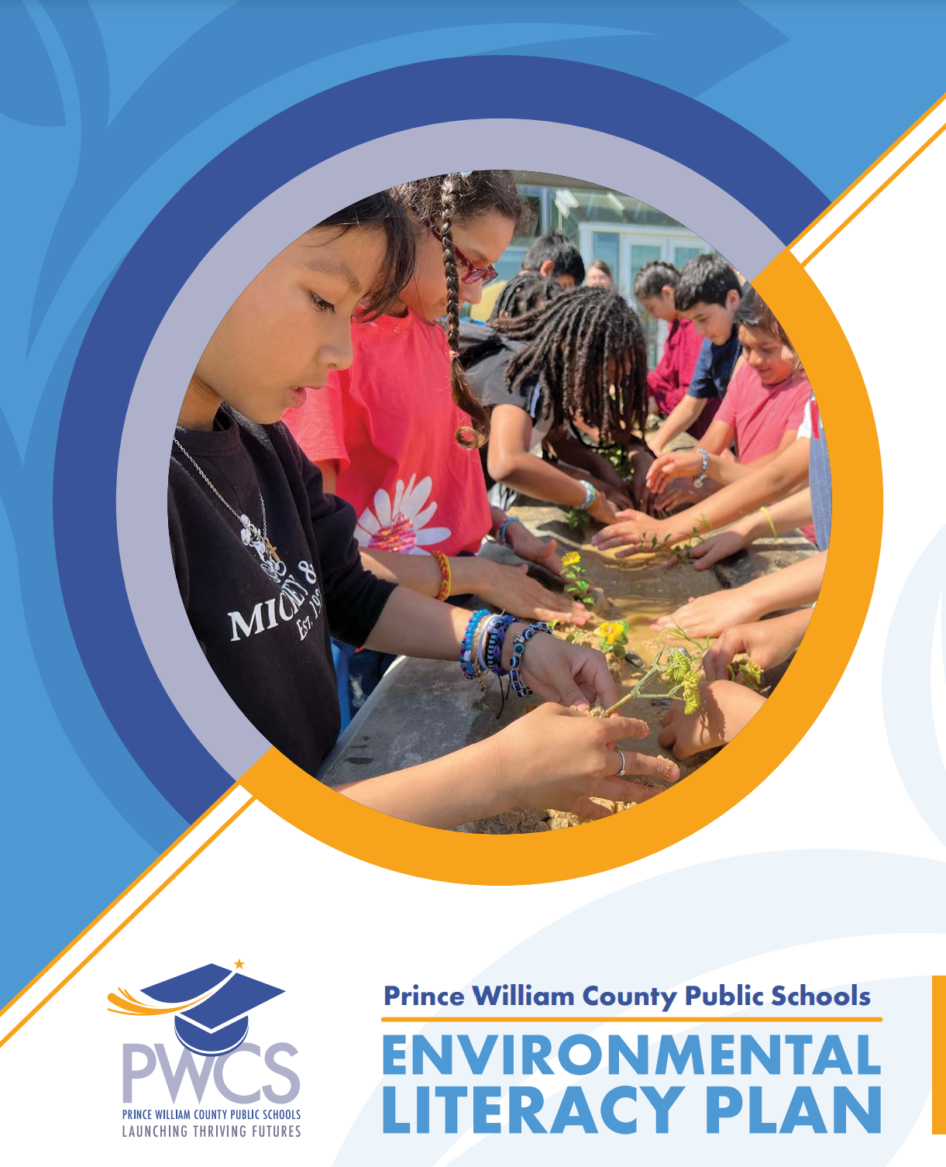Steering the Titanic: Developing an Environmental Literacy Plan in Prince William County Public Schools

by Jeanne Jabara, Sustainability Coordinator, PWCS, Jabarajk@pwcs.edu
by Melinda Landry, Sustainability Coordinator, PWCS, Landryma@pwcs.edu
In Prince William County Public Schools, the second largest school division in Virginia, an effort to make changes is often described as "steering the Titanic." It requires an even keel to navigate our large school division in a new direction. We must often steer into the wind to make progress, changing or staying the course when necessary. However, our goal to develop an effective Environmental Literacy Plan in Prince William County Public Schools (PWCS) was well worth the monumental effort. We successfully published the plan in 2023 and are excited to share the lessons we learned!
Challenges and Choppy Waters
Prince William County Public Schools (PWCS) is a much larger and more complex operation than the Titanic – it may be more accurate to call the county a supertanker! PWCS is located in northern Virginia and has over 90,000 students, 11,000 employees, and 12 million square feet of space located in 98 schools and associated buildings. We are a majority-minority division, being the 10th most diverse school district in the nation. Our oldest school still in operation was built in 1927 and our newest is a LEED silver elementary school opened in the 2023-24 school year. And what’s more, we continue to grow!

Why Creating an Environmental Literacy Plan Matters
Our Environmental Literacy Plan supports the goals of PWCS and the Commonwealth of Virginia. The Innovator and Visionary persona under the PWCS Profile of a Graduate outlines the need for graduates to be able to promote sustainability and responsible innovative practices while understanding global challenges and the ability of the individual to affect change. At the state level, the Virginia Department of Education seeks to ensure that students graduate with the “knowledge, skills, and dispositions to solve problems and resolve issues individually and collectively that sustain ecological, economic, and social stability.” Both of these goals help ensure that PWCS students become environmentally literate.
A district-wide Environmental Literacy Plan can help us track the progress towards reaching environmental literacy throughout a student’s K-12 career. We were able to use the Environmental Literacy Plans from Arlington and Clarke County Public Schools in Virginia as models.
Navigating the Route to Success
Students chart the course
The story begins where it always should: with our students. From 2018-2020, students, driven by a desire to reduce our division’s carbon footprint, spoke passionately and repeatedly during school board public comment periods. Following those efforts, and through collaboration with our Energy and Sustainability staff, the School Board adopted a Sustainability Initiative for the division in June of 2020. This document directed the superintendent to “Create measurable standards of environmental literacy, to include a focus on sustainability for all K-12 students in PWCS [and] establish project-based learning opportunities with new efforts focused on sustainability and environmental literacy.”
Once we received this direction, the next challenge was to tackle funding and staffing. You’ve heard of unfunded mandates, but have you ever considered unmanned ones? Who was going to take on this task? Steering our massive school division required a sea captain, a talented and experienced navigator who could plan a route in the direction of intentional environmental literacy education.
To support our talented navigator, PWCS Energy and Sustainability applied for funding in 2021 for a School District Capacity Building grant through the National Oceanic and Atmospheric Association’s Bay-Watershed Education and Training Program (NOAA B-WET). We secured three years of funding to bring this plan to life!
The stars aligned
In 2021, PWCS received a new superintendent who had a PWCS Strategic Plan that included stronger language supporting environmental literacy. We had also just received district-wide recognition by the U.S. Department of Education Green Ribbon Schools program, and it seemed like everything was falling into place. The stars aligned and the ship turned towards the right direction.
The superintendent included specific language in the Strategic Plan to support the development of environmental literacy and sustainability in PWCS. This reduced barriers to implementation by facilitating an emphasis on organizational coherence and a continuous improvement culture. In other words, including language in the Strategic Plan holds everyone responsible to work toward achieving our environmental literacy and sustainability goals.

The route to reach our goal
Research other plans for examples and ideas.
Use the VA DOE environmental literacy framework for interpreting standards as a template.
Research all courses offered in PWCS for environmental literacy connections to create an alignment guide of curricular connections.
Have meetings, meetings, meetings, and more meetings for awareness and feedback.
Develop the External Partners Network for support and feedback.
Write a rough draft of the plan.
Ask everyone and anyone for feedback.
Write a final draft of the plan.
Create a workflow process to get the appropriate approvals from division leads.
Have the Design Team make it pretty.
Publish!
Lessons from the high seas
Persistence is key – everything takes longer than you could ever imagine.
Have a communication plan and reevaluate often.
Forge relationships with allies.
Talk to people in person.
Listen, listen, and listen again – even when stakeholders are saying nothing, that's a message too.
Look for high level buy-in to help overcome barriers.
Identify intermediate and measurable progress goals.
Ask everyone for feedback and their input. Document those requests.
Have a designated person who has the time to complete all tasks.
Be creative. Barriers provided opportunities to identify allies and solutions.
The ultimate lesson we learned is to be prepared. Once written, you don’t want an environmental literacy plan to merely sit on a shelf. You want it to be accessible, up to date, and relevant. We have already added a section for Pre-K to the second edition of our environmental literacy plan, making it more inclusive of our student body and staff. As a living document, this plan must grow with the division and a dialogue must always be open. Communicating often, with everyone, and at every opportunity is vital for success. It’s all about the long haul!
Waters and winds may change, but with flexibility, adaptation, and a strong crew, you too can steer the Titanic.
PWCS Environmental Literacy Plan
If you would like to learn more, you can access the plan at this link. We highly recommend reading the most powerful section – the Alignment Guide of Cross-Curricular Connections (Appendix 1). This guide helps steer our ship. For each identified content standard, competency, or learning outcome, the guide includes a suggested activity that connects our students to the outdoors, uses the school building as a teaching tool, and establishes a sense of connection to place.

